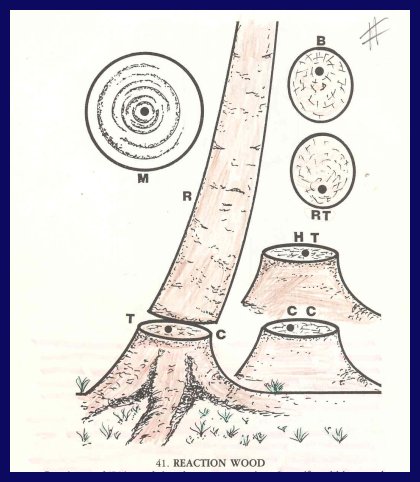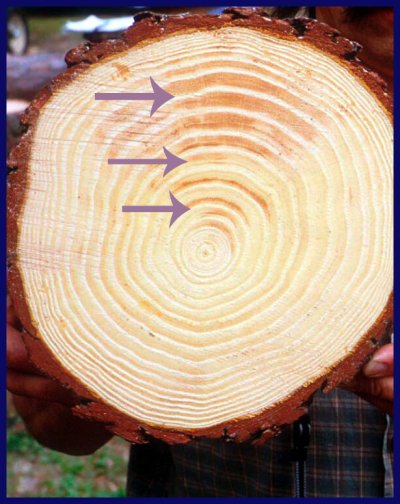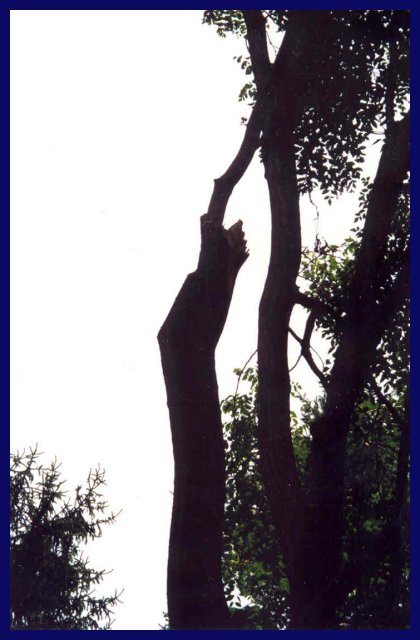


41. REACTION WOOD [R] is wood altered as a response to a lean. In conifers, thicker growth rings with thicker cell walls and more resign-type substances form on the down side of the lean. Conifers form compression wood as a type of reaction wood [C]. In hardwoods, cell walls thicken on the upside of the lean; hardwoods have tension wood as a type of reaction wood [T]. A transverse section through large branches on most trees will look like [B]; while a transverse section of mot large roots will look like [RT]. The dot in [RT] shows the center of the root, not the pith. Roots do not have a pith. In conifers, a spiral-type pattern may form as the tree leans in different directions as it grows [M].
(SHIGO, 1991 page 63)

Pine tree with compression wood.
Arrows represent compression wood side
of this pine tree transverse section.
As always in Nature there are exceptions to the rules.

A little history.
We were asked to remove the branch on the left. You can see our pruning cut. On the right is the cut the tornado made within months of the time we made our cut, pruned this tree.
My point here is we can communicate with nature and to note the pith was down in the stem. See next picture.

From latter picture.
MOST OF THE TIME, THIS IS NOT THE WAY YOU WILL FIND THE PITH
The wound to the right of the pruning cut was from me looking for the callus. We removed the tree soon after the June 1st storms so I think callus would be forming at that time. You can see that some formed in the upper left side of the wound.
